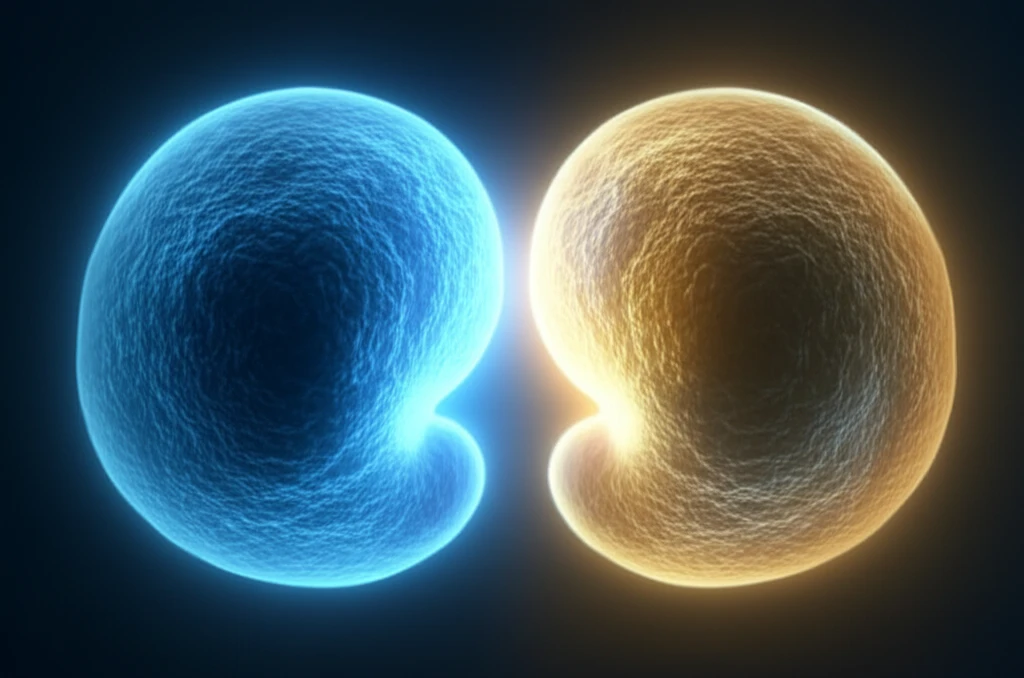
The IVF Twinning Mystery: Why Blastocyst Transfers Can Result in Multi-Chorionic Pregnancies
"Challenging the Conventional Wisdom: A Deep Dive into Monozygotic Multi-Chorionic Pregnancies Following Single Embryo Transfer at the Blastocyst Stage"
For decades, the understanding of how twins form after fertilization has been relatively straightforward: the timing of when a single embryo splits determines the type of twin gestation. Dichorionic-diamniotic (DC-DA) twins, where each fetus has its own placenta and amniotic sac, were thought to arise only from embryos splitting within the first three days after fertilization. After that, the thinking went, only monochorionic twins (sharing a placenta) could develop.
However, in vitro fertilization (IVF) has thrown a wrench into this long-held belief. While IVF is known to increase the overall rate of multiple pregnancies (mostly dizygotic, or fraternal twins, due to transferring multiple embryos), it's also been linked to a higher incidence of monozygotic (identical) twins. Even more intriguing is the emerging evidence that blastocyst transfer, a common IVF practice, can sometimes lead to multi-chorionic pregnancies challenging the existing dogma.
This article delves into the fascinating phenomenon of multi-chorionic pregnancies arising from single blastocyst transfers. It examines a case series and reviews existing literature to shed light on this unexpected outcome, exploring the potential factors involved and what it means for our understanding of twinning and IVF.
Unraveling the Blastocyst Twinning Enigma: Challenging the Day 3 Split Theory

The conventional wisdom, initially presented by Corner in 1955, dictates that DC-DA twins can only form if the embryo divides within the first three days post-fertilization. Monochorionic-diamniotic (MC-DA) twins were believed to result from division between days 4 and 8, and monochorionic-monoamniotic (MC-MA) twins from division between days 9 and 12. Conjoined twins were considered possible only after day 13.
- Micromanipulation Techniques: Procedures like intracytoplasmic sperm injection (ICSI), assisted hatching, and preimplantation genetic screening (PGS) involve manipulating the zona pellucida (the outer shell of the embryo), which some studies suggest could increase the risk of monozygotic twinning. The mechanism is thought to be either a weakening of the zona, leading to easier splitting, or changes in cell-to-cell adhesion within the embryo.
- Extended Culture: Growing embryos in the lab for longer periods (to the blastocyst stage) might also contribute. Some propose that the culture media can harden the zona pellucida, causing the inner cell mass to pinch off and split during hatching.
- Atypical Hatching: In rare cases, the blastocyst might not hatch normally through a large slit in the zona. Instead, it could herniate through a small hole, leading to division into two halves, each with its own trophoectoderm (outer layer) and inner cell mass.
Re-evaluating Twinning Theories in the Age of IVF
The cases of multi-chorionic pregnancies arising from single blastocyst transfers challenge the long-held Corner's theory of embryonic division. While micromanipulation of the zona pellucida, extended culture, and rare occurrences of atypical hatching may all play a role, there is still much to learn about the precise mechanisms at play.
Continued scientific discussion and investigation are crucial to refine our understanding of monozygotic DC-DA twinning, particularly in the context of IVF. Advanced research may reduce the increased risk of monozygotic multiplets linked with IVF technologies. By carefully analyzing and considering these new realities, medical professionals can improve IVF outcomes, potentially reducing the occurrence of monozygotic multiples.
It's time to re-evaluate the traditional framework of twinning and accept that our understanding is evolving, due in large part to the advanced techniques used in modern fertility treatments.
